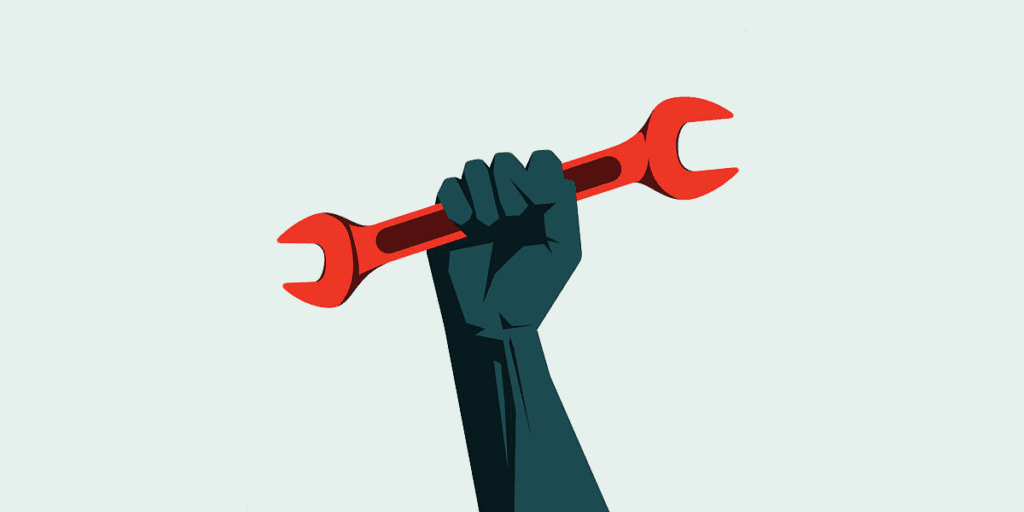Looking to sell your property for top dollar? You’ll need to know how to estimate rehab costs accurately to maximize your return on investment.
When it comes to buying or selling a property, getting the numbers right and estimating your rehab budget is crucial. For real estate investors interested in distressed properties, a key component of estimating profits is estimating rehab costs. In this article, we are going to help you answer the question “How much does a complete rehab cost?”
The Simple 5-Step Process to Estimating Rehab Costs
Estimating renovation projects accurately and quickly requires following these six steps.
1. Understand your buyer and the neighborhood
Before you start calculating rehab costs, understand your final product. Some high-end remodels take months to complete while minor cosmetic renovations can be completed in a couple weeks. If you’re not sure what level of finish you’re aiming for, take a look around the neighborhood. Attend open houses and peruse photos of recently sold homes in the area to understand what level of finish comparable homes offer. Aim to match your level of finish to homes in your area that are selling around the price point you hope to achieve.
2. Assess the current condition of the property
Armed with an understanding of how you want the finished product to look and feel, walk through the property and assess the current condition. It’s a great idea to take a ton of photos and record a video so you can have point of reference later when you’re brainstorming ideas.
Be on the look out for large structural issues, like a roof in need of repair, cracks in the foundation, outdated electrical systems, dated boilers and furnaces, mold, HVAC issues and termite damage. These are items that will surface during the renovation project that can quickly destroy even the most detailed budget.
If you’re buying direct from a seller, the seller may be home will you’re touring the property. Be sure to let them know you will be taking pictures for analysis so they don’t feel like you are invading their privacy.
3. Keep a detailed log of your findings
While you’re touring the property, move through each room, taking note of it’s current condition any necessary repairs. If you walk into the one of the bedrooms and see carpet that looks and smells like urine, its a good idea to note that you’ll be replacing the carpet. Be sure to jot down a quick estimate regarding the sizes of the rooms where you’ll be replacing the carpet so you can have an accurate estimate of square footage when working through your budget. It doesn’t need to be exact; just make your best guess or if you came prepared with a tape measure, even better.
After you finish inside the property, take a detailed look at the exterior of the home. Pay special attention to any big ticket items, such as the condition of the roof, driveway, siding, garage door(s), fencing, windows, sliding glass doors and decking materials. It may also be a good time to take note of the landscaping, noting any foliage that needs to be removed and gathering insights into what you may want to add to maximize the space.
This list creates an initial scope of work that will be crucial for understanding your renovation costs.
4. Organize your list into categories
Below, we’ve included a link to our renovation calculator that we use to generate renovation budgets. The cost of materials and labor will vary by location so be sure to adjust these numbers to your local market. None the less, this a great way to organize your scope of work into categories. Notice, we rely on mid range pricing for most items and allow for an allowance above and beyond mid range prices on the far right column for fancier jobs.
5. Price each item
Once you have your intentions organized by category, it’s time to price each item. If you employed our renovation calculator above, your pricing is complete. If not, move through your list, item by item; Use google or reach out to professionals to obtain accurate pricing information for each item. The more rehabs you manage, the quicker you’ll become at generating a budget and learning how to maximize your return on investment.
If you’re not using our calculator, a good rule of thumb for including labor in your pricing is to double the price of the materials. Again, this is a rough estimate and you may feel more comfortable reaching out to professionals for a more accurate price.
Now you’ve learned how to estimate rehab costs accurately and conservatively. Keep in mind, a rehab price is just a number until you give it context within your project. In order to determine whether or not a rehab effort is worth your while, you will need to subtract your renovation budget from the after repair value of the property. The after repair value, or ARV, is the total value of the property once it is in a habitable, marketable condition. When running your numbers, be sure to include holding costs for each month you own the property before your plan is executed. You’ll also want to be sure to factor in closing costs when considering your best path forward.
For more information on closing costs, check out Closing Costs for a Seller. And, for a complete look at understanding your net proceeds from a home sale be sure to check out How to Calculate Net Proceeds From a Home Sale.
For more information on what we do and how we do it check out “How it Works.” If you prefer to avoid the expense of renovating and listing your property, we would love to purchase your home today “as-is”. Find out how much you can save on closing costs and renovation expenses with a free quote.


